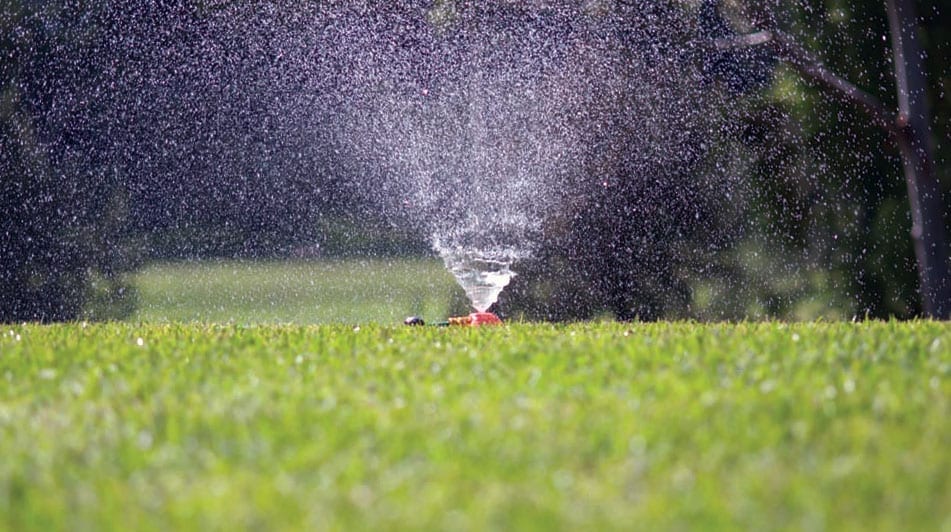Everywhere in Australia can be affected by periods of extreme heat so it’s important that you know how this can impact on your lawn and what to do about it.
Sir Walter lawn is one of the most heat tolerant grasses but even this lawn variety can use a little TLC during prolonged periods of heat. Other varieties of lawn, particularly cool varieties like Fescue, can be easily and adversely affected by higher temperatures and period of low rainfall.
While heatwaves will always impact on lawns a dramatic jump in temperature early in the growing season can signify a higher level of risk of damage to your lawn. At the beginning of the growing season your lawn is already acclimatising to the increase in temperatures so a major jump will cause stress as the plants struggle to cope with the added heat, increased evaporation and limited water.

If a heatwave is predicted then you have the opportunity to take proactive measures. Aim to conduct a thorough watering before the temperature rises to give your lawn a boost to better tolerate the conditions that are about to hit.
Put off mowing the lawn; you don’t want to suffer heat stroke yourself and your lawn will handle extreme heat better if left a bit longer. A higher than usual lawn will reduce stress and loss of water through evaporation as the soil is shaded.
When extreme heat occurs you have two approaches you can take with your lawn:
- Allow the lawn to brown off naturally, wait for conditions to return to normal and for the lawn to bounce back and repair by its self
- Water the lawn plants to keep it looking good
If you decide upon the second approach there are a few tips to follow:
- Water the lawn with one deep watering at the initial stages of stress and then don’t undertake any further watering until the lawn begins to wilt.
- Remember than frequent light watering will encourage shallow root systems while more thorough, less frequent watering will result in a deeper and healthier root system. A deeper root system will give your lawn the strength to get through the hotter periods better.
- Lawn grown on sands will require more frequent watering during extreme than those grown on a heavier soil.
- When you initially lay your lawn use Sir Launcher or wetting agent. These types of products contain moisture magnets that will give the lawn plants more strength and moisture for long periods of hot weather.
- Applying a light top dressing prior to the onset of extreme heat is advisable as it will act like a mulch and lock in the valuable moisture.
- Water in the early morning or very late afternoon when possible so that the lawn retains as much moisture as possible.
Extreme heat can also provide excellent conditions for diseases and pests to take hold so extra attention will need to be paid to the health of your lawn even after the extreme heat passes.
Periods of extreme heat is just part of life in Australia, particularly in South East Queensland, so knowing how to help your lawn survive these conditions is highly recommended. With a little time and effort your lawn plants will not only survive but will thrive when conditions return to normal.

This Post Has 0 Comments